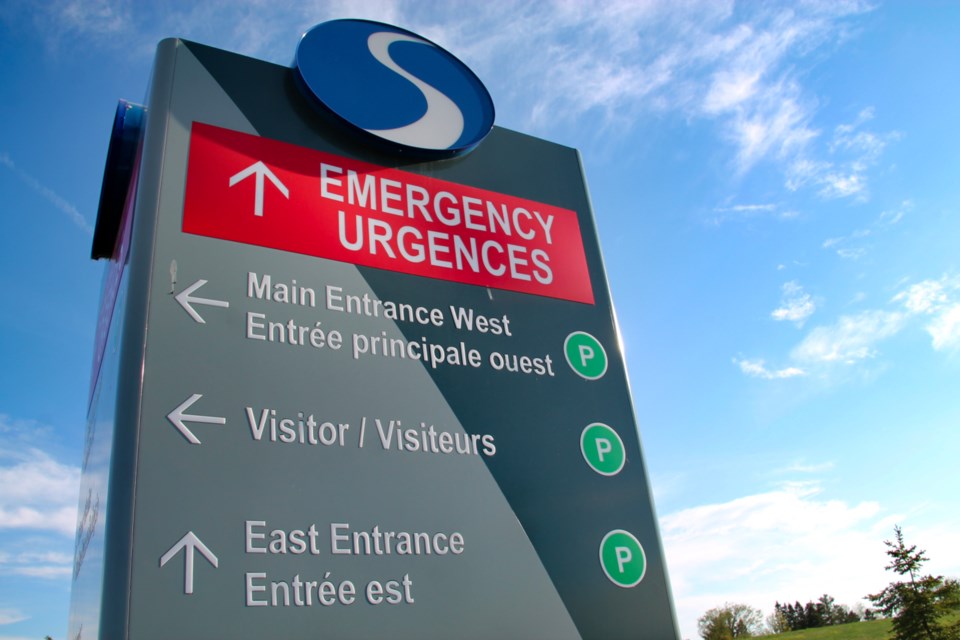As part of what has become an ongoing concern, patients visiting Sault Area Hospital’s Emergency Department have been advised to expect a long wait for treatment.
A Twitter post from SAH reads: “Due to high patient volumes and staffing shortages in the ED, patients who attend the ED may experience longer wait times. Please be patient and kind with our staff as we manage demands in our ED. If you have an emergency, call 9-1-1 or proceed to the ED. Do not delay care."
“There are times when a patient's visit to the Emergency Department may take several hours,” said Brandy Sharp Young, SAH spokesperson in an email to SooToday.
“Wait time depends on a number of factors – the number of doctors we have on duty, the number of patients waiting for care, and the amount or type of care they require. Wait times are also longer if a patient requires an x-ray or blood test, if you need to see a specialist, or if you need to be admitted,” Sharp Young wrote.
“On occasion, our Emergency Department gets backed up because the volume of patients in the emergency department exceeds our capacity as defined by the number of physicians, nurses and treatment beds available. Sometimes, there may not be acute care beds available in the hospital to accept patients from the Emergency Department. We work hard on a daily basis to review patient volumes in the Emergency Department and throughout the hospital to ensure there is as much capacity as possible, and we have processes in place to maximize patient flow throughout the facility,” Sharp Young wrote.
One of the processes that SAH has put in place to maximize patient flow is the Fast Track Department, in which patients are treated for emergencies of a lesser nature.
In an April 2022 comparison of SAH ED results compared to provincial results, it was found that:
- On average, all SAH patients waited 2.2 hours for first assessment by a doctor in emergency, compared to 1.9 hours provincially
- 3.4 hours were spent at SAH Emergency by low-urgency patients not admitted to hospital, 66 per cent of them finishing their emergency visit within a target time of four hours. That compares to patients waiting three hours, 76 per cent of them finishing their emergency visit within a target time of four hours provincially
- High-urgency patients not admitted to SAH spent 4.8 hours in Emergency, 88 per cent of them finishing their emergency visit within a target time of eight hours, compared to 4.5 hours and 90 per cent of patients finishing within eight hours provincially
- SAH patients needing to be admitted to hospital had a 16.5 hour wait on average, 26 per cent of them admitted within a target time of eight hours, compared to a 20 hour wait and 25 per cent admitted within a target time of eight hours provincially
It has been noted by national media sources that there is an exodus of exhausted nurses from the nursing profession, suggesting that is one of several factors contributing to long wait times nationwide.
Ila Watson, SAH president and CEO, speaking at the most recent SAH board of directors meeting June 20, said that staffing is an issue at SAH.
While not providing specific figures, Sharp Young wrote in a separate email to SooToday that “there are ongoing health human resources challenges facing the healthcare system. Sault Area Hospital is recruiting for various clinical and non-clinical healthcare worker positions. Sault Area Hospital employs a diverse approach to ensuring we have enough healthcare workers available to meet the care needs of our communities.”
